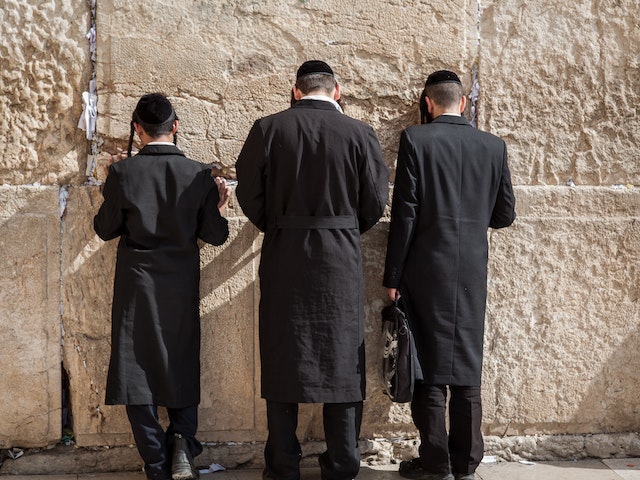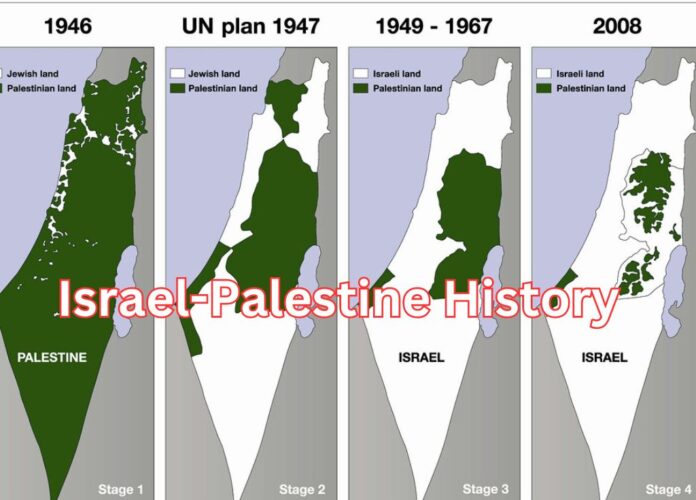The history of Israel and Palestine is a tapestry woven from the threads of religion, politics, and centuries-old conflicts. Stretching back millennia, this historical narrative is a tangle of divergent accounts, complex disputes, and deeply rooted emotions. In this article, we will embark on a journey through time to explore the rich, intricate, and often tumultuous history of the Israel-Palestine conflict. By delving into the historical context, key events, and the two competing narratives, we aim to shed light on this enduring and highly debated issue.
Page Contents
The Ancient Origins
The roots of the Israel-Palestine conflict reach far into the annals of history. For both Israelis and Palestinians, the region now known as Israel and Palestine holds deep historical and religious significance. It is the land where biblical figures like Abraham, Isaac, and Jacob are said to have lived, and it is the site of ancient cities such as Jerusalem, Bethlehem, and Hebron.
In ancient times, the region was inhabited by various peoples, including the Canaanites, Israelites, and Philistines. The Israelites established the Kingdom of Israel around 1000 BCE, and Jerusalem became their capital under King David and King Solomon. However, in 586 BCE, the Babylonians captured Jerusalem, destroyed the First Temple, and exiled the Jewish population, marking the beginning of a series of displacements and conquests that would shape the region’s history.
The Ottoman Era
The Ottoman Empire, which ruled the region for centuries, left a lasting impact on the demographic and political landscape of what is now Israel and Palestine. During this time, Jews, Muslims, and Christians lived together, albeit with their own distinct communities and customs.
Also Read : Hanging Gardens of Babylon: The Ancient Wonder Lost to Time
In the late 19th and early 20th centuries, the Zionist movement emerged, advocating for a Jewish homeland in Palestine. This movement gained momentum, particularly after the Balfour Declaration of 1917, in which the British government expressed support for the establishment of a “national home for the Jewish people” in Palestine.
The British Mandate and the Nakba
The end of World War I saw the collapse of the Ottoman Empire and the arrival of British rule in Palestine under the League of Nations Mandate. This period was marked by increasing tensions between Jewish immigrants and Arab residents, as Jewish immigration surged.
In 1947, the United Nations proposed a partition plan that would divide Palestine into separate Jewish and Arab states, with Jerusalem under international administration. While the Jewish leadership accepted the plan, the Arab nations rejected it, leading to the outbreak of the 1948 Arab-Israeli War. This war resulted in the establishment of the State of Israel and the displacement of hundreds of thousands of Palestinian Arabs, an event known as the Nakba, meaning “catastrophe” in Arabic.

The Six-Day War and Its Aftermath
In 1967, another pivotal moment in Israel-Palestine history occurred with the Six-Day War. Israel’s victory in this conflict resulted in the occupation of the West Bank, Gaza Strip, East Jerusalem, and the Golan Heights. The Israeli settlements in these territories became a contentious issue, leading to ongoing tensions and conflicts.
The Oslo Accords and Peace Process
Efforts to achieve a lasting peace between Israelis and Palestinians gained momentum in the 1990s. The Oslo Accords, signed in 1993 and 1995, provided a framework for Palestinian self-rule in parts of the West Bank and Gaza Strip. Yasser Arafat, representing the Palestine Liberation Organization (PLO), and Israeli Prime Minister Yitzhak Rabin, along with Foreign Minister Shimon Peres, played key roles in these negotiations.
However, the peace process faced numerous challenges, including acts of violence from both sides and disputes over issues such as borders, settlements, and the status of Jerusalem. Despite moments of optimism, a final, comprehensive peace agreement remained elusive.
The Two Narratives
One of the enduring complexities of the Israel-Palestine conflict is the existence of two competing narratives. Each side has its own version of historical events, deeply rooted in its collective memory and identity.
For Israelis, the narrative centers on the establishment of the State of Israel as a refuge for Jews, fulfilling the Zionist dream after centuries of persecution and the Holocaust. They emphasize the need for a secure homeland in the face of ongoing threats to their existence. Israelis highlight their efforts for coexistence and point to the multiple peace offers made to the Palestinians.
Also Read : Petra: The Rose-Red City of Ancient Wonders
On the Palestinian side, the narrative revolves around dispossession, displacement, and the struggle for self-determination. Palestinians see themselves as the victims of a historic injustice, emphasizing the Nakba and the loss of their ancestral land. They view Israeli settlements in the West Bank as illegal and argue for the right of return for Palestinian refugees.

The Future of Israel-Palestine
The history of Israel and Palestine is fraught with pain, conflict, and loss. Yet, despite decades of strife, there remains hope for a peaceful resolution. Many international actors, including the United Nations and various world powers, continue to support a two-state solution, where Israel and a future Palestinian state coexist side by side in peace and security.
However, reaching such an agreement is a daunting task, given the deep-rooted historical grievances and complex geopolitical realities. Dialogue, diplomacy, and mutual recognition remain essential to finding a just and lasting resolution to this enduring conflict.
Conclusion
The history of Israel and Palestine is a deeply intricate tapestry, woven together by centuries of human experiences, beliefs, and struggles. It is a history marked by both triumphs and tragedies, with two narratives that often appear irreconcilable. Despite the challenges, the quest for a peaceful coexistence between Israelis and Palestinians continues. As the world watches, it remains hopeful that one day, the long and complex history of this region will be transformed into a story of peace, coexistence, and shared prosperity.
FAQ
Q1: What is the Israel-Palestine conflict, and why is it significant?
A1: The Israel-Palestine conflict is a long-standing and deeply rooted dispute between Israelis and Palestinians over issues such as territory, borders, refugees, and the status of Jerusalem. It is significant due to its historical, religious, and geopolitical implications, as well as its impact on regional stability.
Q2: What is the Nakba mentioned in the article?
A2: The Nakba, an Arabic term meaning “catastrophe,” refers to the events of 1948 when hundreds of thousands of Palestinian Arabs were displaced and became refugees following the establishment of the State of Israel and the 1948 Arab-Israeli War.
Q3: What were the Oslo Accords, and did they lead to lasting peace?
A3: The Oslo Accords were a series of agreements signed in the 1990s between Israel and the Palestine Liberation Organization (PLO), aimed at achieving a peaceful resolution to the conflict. While they did provide a framework for Palestinian self-rule in parts of the West Bank and Gaza Strip, a comprehensive and lasting peace agreement has not been reached, and the conflict persists.
Q4: How have settlements in the West Bank contributed to the conflict?
A4: Israeli settlements in the West Bank, which began to expand after the Six-Day War in 1967, have been a major source of contention. Palestinians view them as illegal under international law and as an obstacle to the establishment of a future Palestinian state.
Q5: What is the two-state solution, and why is it proposed as a resolution to the conflict?
A5: The two-state solution is a proposed resolution to the Israel-Palestine conflict, where Israel and a future Palestinian state coexist side by side in peace and security. It is supported by many international actors as a means to address the aspirations of both Israelis and Palestinians for self-determination and statehood.
Q6: What are the two competing narratives mentioned in the article?
A6: The two competing narratives in the Israel-Palestine conflict represent the different historical perspectives of Israelis and Palestinians. Israelis emphasize their struggle for a secure homeland, while Palestinians focus on dispossession, displacement, and the desire for self-determination. These narratives often shape the viewpoints and positions of each side.
Q7: What role do international actors play in the conflict’s resolution?
A7: International actors, including the United Nations and various world powers, have played a significant role in facilitating negotiations and promoting peace in the region. They have advocated for a two-state solution and have provided diplomatic, financial, and humanitarian support to address the conflict’s humanitarian and political aspects.
Q8: Is there hope for a peaceful resolution to the Israel-Palestine conflict?
A8: Despite the complexities and challenges, there remains hope for a peaceful resolution to the Israel-Palestine conflict. Dialogue, diplomacy, and mutual recognition remain essential, and many individuals, organizations, and governments continue to work toward a just and lasting peace in the region.


